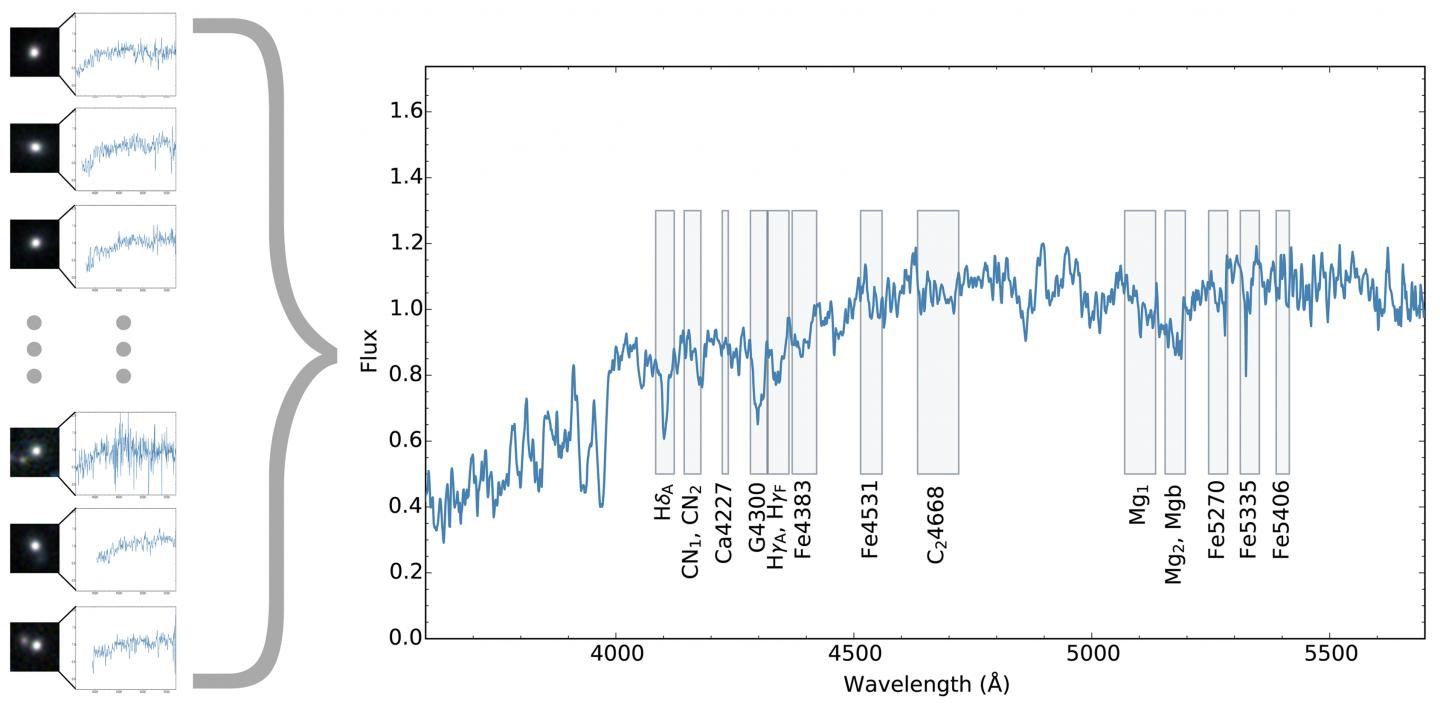An international team led by researchers at Swiss Federal Institute of Technology in Zürich observed massive dead galaxies in the universe 4 billion years after the Big Bang with the Subaru Telescope’s Multi-Object InfraRed Camera and Spectrograph (MOIRCS).
They discovered that the stellar content of these galaxies is strikingly similar to that of massive elliptical galaxies seen locally. Furthermore, they identified progenitors of these dead galaxies when they were forming stars at an earlier cosmic epoch, unveiling the formation and evolution of massive galaxies across 11 billion years of cosmic time.
In the local universe, massive galaxies hosting more than about 100 billion stars are predominantly dead elliptical galaxies, that is, without any signs of star-formation activity. Many questions remain on when, how and for how long star formation occurred in such galaxies before the cessation of star formation, as well as what happened since to form the dead elliptical galaxies seen today.

In order to address these issues, the research team made use of fossil records imprinted by stars in the spectra of distant dead galaxies which give important clues to their age, metal content, and element abundances. Local massive dead galaxies are about 10 billion years old and rich in heavy elements.
Also, alpha-elements (Note), which measure the duration of star formation, are more abundant than iron, indicating that these galaxies formed a large amount of stars in a very short period. The team investigated the stellar content of galaxies in the distant universe 4 billion years after the Big Bang, in order to study galaxy evolution much closer to their formation epoch.
The team took the advantage of the MOIRCS’s capability to observe multiple objects simultaneously, efficiently observing a sample of 24 faint galaxies. They created a composite spectrum that would have taken 200 hours of Subaru Telescope’s time for a single spectrum of comparable quality.
Analysis of the composite spectrum shows that the age of the galaxies is already 1 billion years old when observed 4 billion years after the Big Bang. They host 1.7 times more heavy elements relative to the amount of hydrogen and their alpha-elements are twice enhanced relative to iron than the solar values. It is the first time that the alpha-element abundance in stars is measured in such distant dead galaxies, and it tells us that the duration of star formation in these galaxies was shorter than 1 billion years. These results reveal that these massive dead galaxies have evolved to today without further star formation.
What do massive dead galaxies look like when they are forming stars? To answer this, the team investigated the progenitors of their sample based on their spectral analysis. The progenitors must be star-forming galaxies in the universe 1 billion years before the observed epoch for the dead galaxies. Indeed, they do find similarly massive star-forming galaxies at the right epoch and with the right star formation rate expected from the spectra. If these active galaxies continue to create stars at the same rate, they will immediately become more massive than seen in the present universe. Therefore, these galaxies will cease star formation soon and simply age.
This study establishes a consistent picture of the history of massive galaxies over 11 billion years of cosmic time. Dr. Masato Onodera who leads the team says, “We would like to explore galaxy evolution in more detail by carrying out an object-by-object study and by extending the method to an even earlier epoch.”
This research was published on 1st August 2015 in The Astrophysical Journal (Onodera et al. 2015 “The Ages, Metallicities, and Element Abundance Ratios of Massive Quenched Galaxies at z~1.6”). The preprint of the paper is available at http://arxiv.
Note: Alpha-elements are elements which have an atomic mass that is a multiple of 4, i.e., of the helium nucleus. In this article, it refers to elements produced by Type II supernovae such as oxygen, neon, magnesium, silicon, sulfur, calcium, and titanium.
NATIONAL INSTITUTES OF NATURAL SCIENCES






